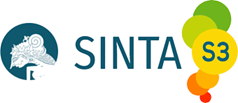Identifikasi Kesulitan Siswa Pondok Pada Pembelajaran Konvensional Dalam Menyelesaikan Soal Sistem Persamaan Linear Satu Variabel
DOI:
https://doi.org/10.33394/mpm.v13i1.12739Keywords:
Identification of Difficulties, Conventional LearningAbstract
This study was conducted to identify the types of difficulties experienced by students in solving PLSV problems. Descriptive type of research using test instruments and interview guidelines. The research location at MTs ar Riyadh Jenggawah Jember in class VII a total of 30 students. Subjects with the identification results of post-test results had difficulty with operations, concepts, and understanding the problem as many as 3 people. The indicators in the study include three parts, namely difficulties in operations, difficulties in concepts, and difficulties in understanding the problem. From the results of the data obtained, 41.5% of students had difficulty operating, 65% had difficulty in mathematical concepts, and 50% had difficulty in understanding the problem. Based on the results of the analysis obtained, the subject has difficulty in determining the result of an operation through the process of subtraction, addition, multiplication, and division (difficulty in operations), the subject has difficulty in classifying and using the appropriate theorems and formulas (difficulty in concepts), and the subject has difficulty in visualizing / describing / rewriting the contents of the problem in the form of a mathematical model (difficulty understanding). The factors that cause difficulties experienced by students are not only from within students but also from teaching staff who only stick to conventional methods and rarely use learning media so that in teaching and learning activities students are less active.
Downloads
Published
How to Cite
Issue
Section
Citation Check
License
Authors who publish with this journal agree to the following terms:
- Authors retain copyright and grant the journal right of first publication with the work simultaneously licensed under a Creative Commons Attribution License that allows others to share the work with an acknowledgement of the work's authorship and initial publication in this journal.
- Authors are able to enter into separate, additional contractual arrangements for the non-exclusive distribution of the journal's published version of the work (e.g., post it to an institutional repository or publish it in a book), with an acknowledgement of its initial publication in this journal.
- Authors are permitted and encouraged to post their work online (e.g., in institutional repositories or on their website) prior to and during the submission process, as it can lead to productive exchanges, as well as earlier and greater citation of published work (See The Effect of Open Access).
Â













